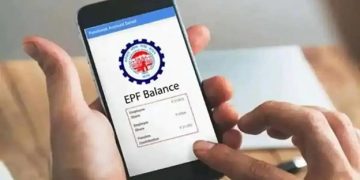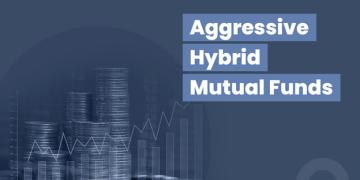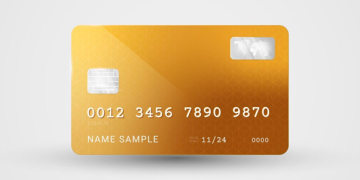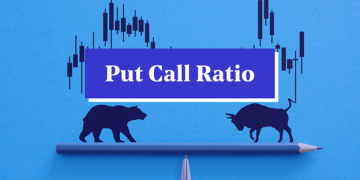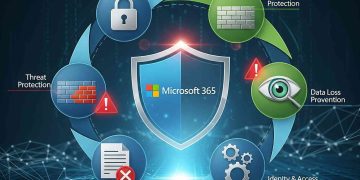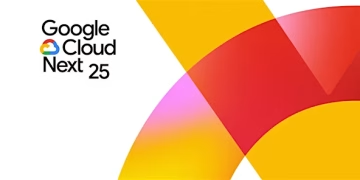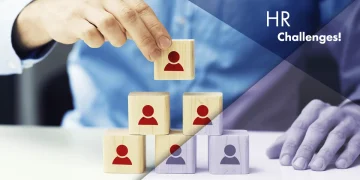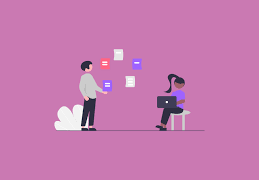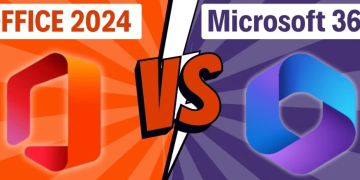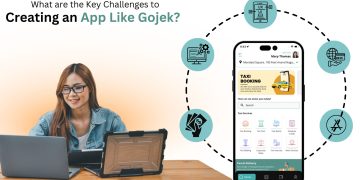Building a SaaS product from the ground up is an exciting but difficult endeavor that involves meticulous planning, technical expertise, and a thorough understanding of one’s potential market. To transform an idea into a viable software product, the developer must go beyond coding. An entrepreneur or a SaaS app development company should be able to create user-friendly interfaces, scale the system, and prioritize security precautions.
Also, to give users a smooth experience, testing and iterating must be done all the time. It can be hard to go through this procedure, but breaking it down into steps makes it easier. This post will look at the important steps and things to think about while making a successful SaaS app from scratch.
What Is a SaaS App?
A SaaS app is a software that one might use over the internet, generally via a Web browser. Users are not requested to download software and install it on their respective computers; rather, they subscribe and use the software over the internet. Think of Google Workspace, Trello, Slack, and Canva.
This approach is popular because it offers companies and customers resources at hand without dealing with infrastructure or having to invest their time in version changes. From a simple task manager to big enterprise solutions, this paradigm works well.
Why Businesses Are Choosing SaaS
Companies choose SaaS because it removes the need for on-premise setup, IT maintenance, and large upfront payments. Subscriptions break down big costs into manageable monthly or yearly fees.
SaaS tools also update automatically. Users don’t need to install patches or worry about compatibility. That speed and convenience are major reasons this model continues to grow.
For the companies creating SaaS, the benefits are just as strong. Subscriptions bring in predictable monthly revenue. Developers can push updates quickly. User feedback helps shape future versions of the product faster than in traditional software.
The Key Stages in Building a SaaS App
Creating a SaaS app from scratch takes more than just hiring a few developers and building what’s in your head. It’s a structured process. Skipping even one part can lead to product failure or wasted investment.
Let’s break down each major stage.
1. Market Research and Problem Validation
Everything starts here. Before writing a single line of code or designing a logo, you need to know who you’re building for—and why.
Talk to potential users. Ask what they’re doing now to solve their problem. Find out what they like or dislike about current tools. Look for signs of frustration. Browse online forums, Reddit, or review sites where your target audience hangs out.
If people aren’t experiencing a real, persistent problem, or if existing solutions already satisfy them, then building a new app won’t solve anything. You need to be solving a pain that people feel often enough to want a better tool.
This part isn’t glamorous. But it saves you thousands of dollars and months of wasted development later.
2. Defining Core Features
Once you know the problem is worth solving, the next step is choosing what to build first.
Don’t try to pack every possible feature into version one. Start with a Minimum Viable Product (MVP)—just enough to help people get a specific job done.
For example, if you’re building a tool for freelance invoice tracking, your MVP might only need:
- A dashboard to create invoices
- Client management
- Payment tracking
Extras like custom branding, integrations, or reporting can wait. When it comes to custom app development, focusing on a small set of well-built features that deliver real results is more important than a long list of buggy ones.
3. Choosing the Right Tech Stack
Your technology choices affect how fast you can build, how well your app performs, and how easy it will be to scale later.
Here’s a simple, common setup for a SaaS app:
- Frontend (what users see): React, Vue.js, or Angular
- Backend (where data is handled): Node.js, Ruby on Rails, Django, or Laravel
- Database: PostgreSQL, MySQL, or MongoDB
- Authentication: Firebase Auth, Auth0, or custom OAuth
- Payments: Stripe or Paddle
- Cloud hosting: AWS, Google Cloud, or DigitalOcean
Don’t just follow what’s trendy. Choose tools your team knows, or that have large developer communities for support.
4. Designing the User Interface
Your app might work perfectly behind the scenes, but if users can’t figure it out quickly, they won’t stick around.
Start with basic wireframes—simple sketches of each screen. Test them with real users. Then build high-fidelity designs with tools like Figma or Adobe XD. Keep things simple and consistent.
A good design should:
- Help users complete tasks with fewer steps
- Highlight the most important actions.
- Avoid overwhelming first-time users.s
Your goal isn’t just to make the app look pretty. You want users to trust it, understand it, and use it without a manual.
5. Development and Testing
With designs approved, it’s time to build. This involves writing backend logic, setting up databases, and bringing frontend interfaces to life.
Work in sprints—usually one- or two-week cycles—with clear goals for each. Keep communication open between developers, designers, and product leads. Each small release should be testable and deliver progress.
Testing matters. Run unit tests, integration tests, and user acceptance tests. Try your app on different screen sizes, browsers, and devices. Fix bugs early.
Before launch, run internal QA (quality assurance). Get team members to act like users and point out any issues or confusing flows.
6. Launch and Maintenance
When your MVP is stable and works as expected, launch it to a limited audience. Start small. Early users are incredibly valuable. They’ll find issues you missed and help shape future features.
At this point, track key product metrics:
- User signups
- Activation rates
- Feature usage
- Churn (how many users stop using your app)
- Support tickets
Fix what’s broken, improve what’s slow, and listen to user feedback. This isn’t a one-time event. Ongoing maintenance is part of running a real SaaS product.
Plan for regular releases—bug fixes, minor features, performance improvements. Stay in touch with your early users through emails, chat, or community groups.
Security and Compliance
If your app stores user data—even emails or billing info—security must be a top priority. One leak or breach can ruin your reputation.
Set up secure user authentication. Use HTTPS and SSL everywhere. Store passwords using strong hashing algorithms like bcrypt. Never store raw credit card data—instead, use Stripe or another certified provider.
If you serve users in Europe, you need to meet GDPR rules. In healthcare, HIPAA compliance is essential. If you target enterprises, consider preparing for SOC 2 audits.
Good security practices also include regular backups, access logs, firewalls, and user role management. It’s better to build security in from day one than try to fix it later.
Scaling the Application
If your product gains traction, you’ll need to prepare for growth. This involves both backend scalability and business infrastructure.
On the technical side:
- Use cloud platforms that allow auto-scaling
- Optimize database queries
- Add caching (e.g., Redis)
- Use a CDN for faster global access.
On the business side:
- Build admin tools to manage user accounts
- Train support staff or set up a help desk
- Improve documentation and onboarding for new users.
- Consider building APIs or integrations with other tools.s
Scaling is not just about handling more traffic—it’s about supporting more users without falling apart.
Common Mistakes to Avoid
Many SaaS founders repeat the same mistakes. Here are a few worth avoiding:
Building Without User Feedback
It’s easy to get excited and build in isolation. But without user feedback, you risk creating something nobody needs.
Too Many Features, Too Soon
A bloated MVP delays your launch and overwhelms users. Focus on a narrow use case first.
Poor Onboarding
If users don’t understand how to use your app within the first minute, many won’t return. A guided intro or simple walkthrough makes a big difference.
Ignoring Bugs
Small bugs can ruin trust. If something breaks once, users might forgive it. If it breaks twice, they’ll start looking for alternatives.
Weak Security
Security isn’t optional. If you lose user data, you lose users—often for good.
Final Thoughts
Building a SaaS app from scratch implies that you need a lot more than an idea and some code. It demands forethought, design thinking, disciplined development, continuous communication, and emphasis on its reflection from users.
The most successful SaaS products aren’t the most feature-rich. They’re the ones who solve a specific problem well, communicate clearly, and improve consistently.
If you commit to quality over speed and to solving real problems over chasing trends, your SaaS project has a strong chance of success.















